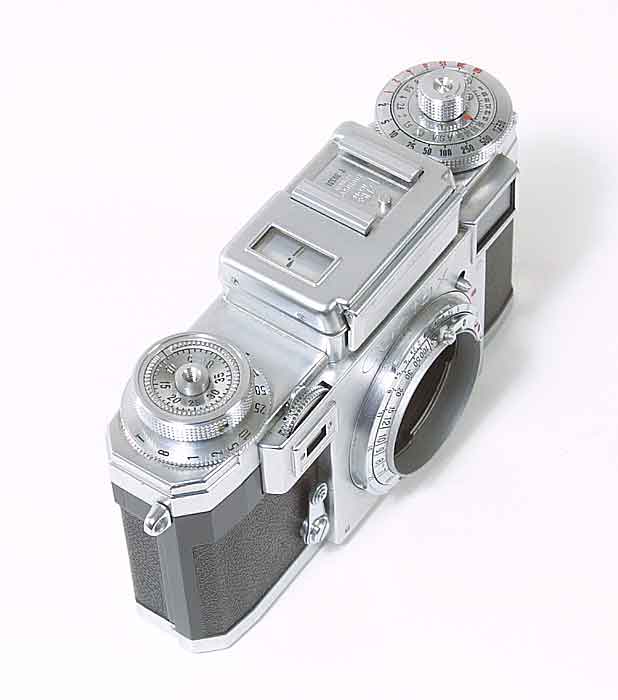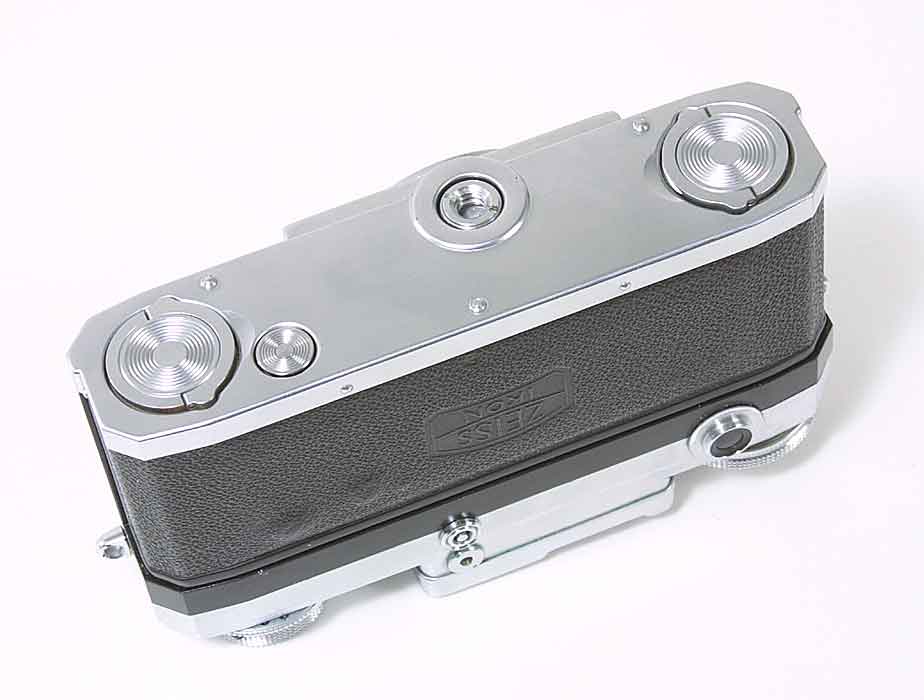
Photographica Pages
An online guide to collectable cameras and related stuff
Zeiss Ikon Contax IIa and IIIa
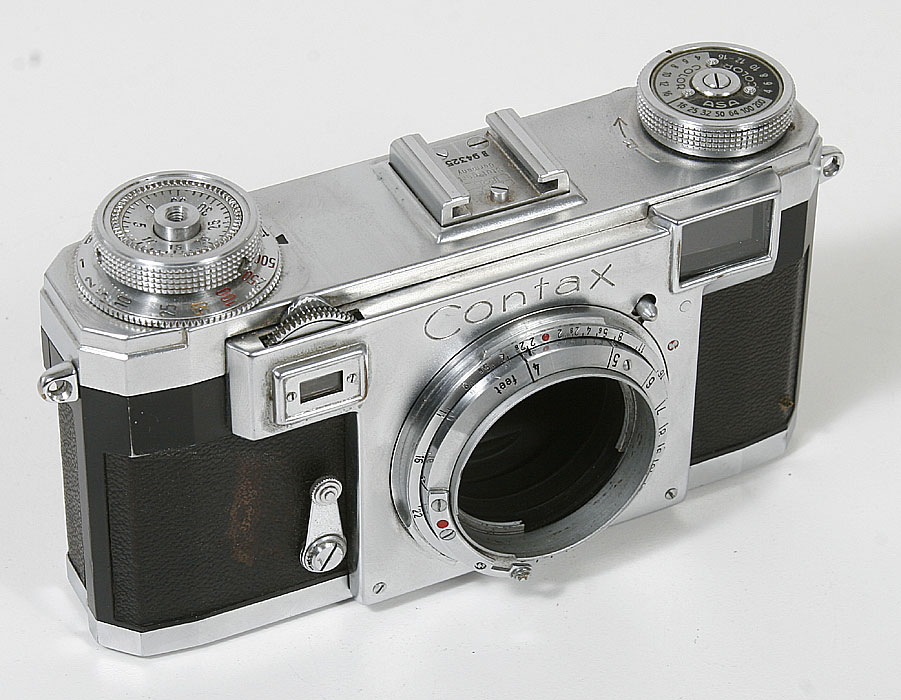
The Contax IIa body.
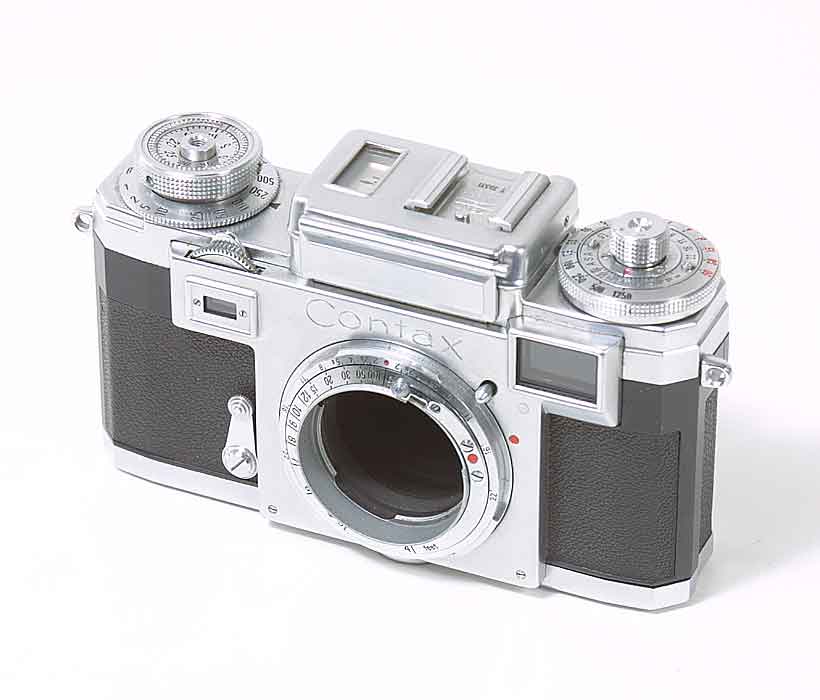
The Contax IIIa body.

The Contax IIa body.

The Contax IIIa body.
The war was over. Germany was divided between occupying forces that were hostile to each other. Roads and bridges were damaged. Raw materials were scarce. Leitz was a much smaller company than Zeiss. It was located in Wetzlar, and escaped the war without significant damage. Zeiss on the other hand, was a huge company, the largest camera producer in Germany, and was hit by the consequences of the war much harder. It's plant in Jena, the glassworks, was now in the Soviet zone. The Zeiss in the East was doomed to become estranged from the Zeiss in the West, leading to a split and a series of court battles over names and trademarks. The production line that produced the Contax was seized as war reparations by the Soviets, along with all of the stock of parts, and moved to Kiev.
It took Zeiss until 1950 to get their new Contax line on the market. Leitz had back in production almost immediately. But by 1950 their were two other major players in the market, both Japanese. Nippon Kogaku was marketing the Nikon, Canon had the IIb which was enjoying great popularity through the PX stores of the American military. Most of the advanced features of the Contax II had been adopted by the Nikon, the styling and lens mount had been lifted directly from the Contax II, while the shutter was of the Leica type. And the Canon featured combined rangefinder/viewfinder with a switchable finder that covered 50, 100 and 135 focal lengths. All of the advances of the Contax had lost patent protection as part of the war repatriations act. Zeiss had invented lens coating at a time when they were not really able to reap the commercial benefit.
The Contax was one of the most complex cameras built at that time. The drawings were lost in the firebombing of Dresden. Faced with the prospect of dismantling cameras to measure the parts, Zeiss decided it was time to re-design the Contax and improve it. The Contax IIa was born.
The Contax IIa was smaller and lighter than the Contax II it succeeded, and no features of the II were dropped. The shutter mechanism was simplified and improved. It was still a metal slat vertically running shutter, but the slats were made from aluminum rather than brass. This made them lighter, eliminating the wheeze of the prewar shutter, but also required them to be thicker, which only caused a problem when mounting the pre-war 35/2.8 Biogon, which would strike the shutter upon mounting, and damage the rear element.
Flash synch was added to the rear of the camera. It required a mechanical adapter cord to use. Within a year Nikon, Leica and Canon all offered cameras with internal flash synch, and the Contax synch was outdated. In 1954 Zeiss changed the design of the Contax IIa and IIIa to accept standard flash cords. These later cameras have the shutter speeds marked in different colors, and have come to be known as "Color Dial" cameras, the older type as "Black Dial".
Zeiss released the Contax IIIa in 1951. It was a IIa with an uncoupled selenium meter added to the top.
In the first years after the war, lens production resumed at Jena, and most of the immediate pre-war designs were resumed in aluminum barrels. As the rift between the two Zeiss companies grew, the West German Zeiss realized the need for glass production, and opened a glassworks in Oberkochen. In 1950 the first of the new lenses, marked "Zeiss-Opton" were released. In the legal battles to follow, the East German Zeiss was stripped of the rights to any of the prewar Zeiss trademarks. Eventually they were to mark their lenses simply "aus Jena".
Lenses were one of the big strengths of the Contax, but Zeiss did little to improve their lens lineup after the war. They did introduce the 21/4.5 Biogon, the widest lens available for 35mm in 1953. Leitz didn't offer the 21/4 Super Angulon until 1958, and Nikon didn't have a 21 until 1959.
Other than that, the Zeiss lens lineup looked pretty bleak. The only other wide angle focal length offered by Zeiss was the 35mm, in both 2.8 and 3.5 versions. Nikon had a 28/3.5 out in 1952, Canon in 1951. Nikon also had a 25/4 out in 1953. While Zeiss had the early advantage in speed in 35mm lenses, Nikon had a 35/1.8 available in 1956. Canon sold a string of fast 35mm lenses, the fastest of which was 1.5.
In the normal range, Zeiss added no new lenses. The Zeiss 50/1.5 Sonnar had been equaled by Leitz in 1936, and Nikon in 1950. Nikon came out with the 50/1.4 at the end of 1950, and topped that with the 50/1.1 in 1956. Canon also released their 50/1.2 in 1956.
In the telephoto range, Zeiss was just as quiet. Leitz, Nikon and Canon all had 85/1.5 lenses by 1953. Nikon introduced a superb 105/2.5 and shot mount mount 180/2.5 late in 1953. They had offered a 250/4 in 1951 and a 500/5 in 1952. By the end of 1959 they would add a 350/4.5 and a 1000/6.3 mirror lens.
The difference between Zeiss, and Leitz, Canon and Nippon Kogaku was that until 1959 the later three only had their 35mm rangefinder systems to market. The Contax was one line of many. During this period, Zeiss was building folding cameras from simple Nettars to sophisticated Super Ikontas. They were building Ikoflex TLRs to compete with the Rolleiflex. They were building Continas and Contessas, even box cameras. And in 1953 they moved into the SLR market with the Contaflex line. And building cameras was actually just a small portion of what Zeiss did. They were still an optical house first, and built lenses, as well as scientific and medical instruments.
Zeiss was the first of the big four to give up on the professional system rangefinder in 1961. They had introduced the Contarex line of professional caliber SLR cameras in 1959 (the same year Nippon Kogaku introduced their revolutionary Nikon F) and decided this was where the future lay for the 35mm camera. Nikon offered the SP until about 1964 (and built a special batch of black finish S3 cameras for the 1964 Olympics). Canon discontinued their last system rangefinder in 1968, leaving Leitz, the originator of the 35mm rangefinder the sole survivor.
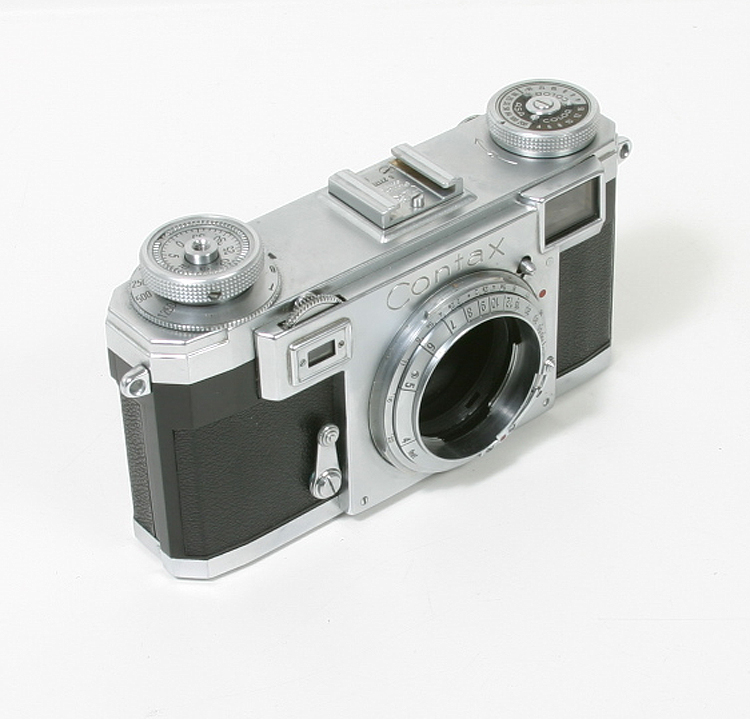
The Contax IIA Black Dial body.
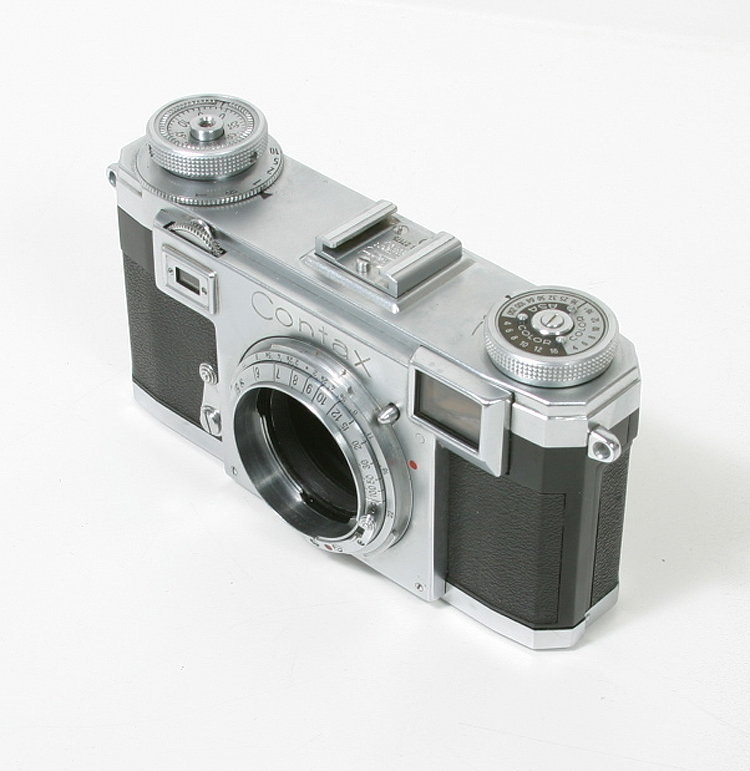
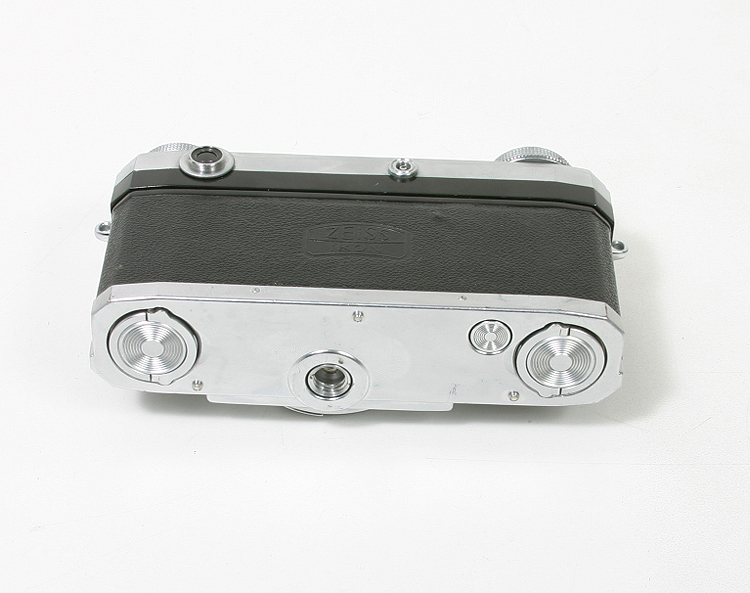

The Contax IIA Color Dial body.
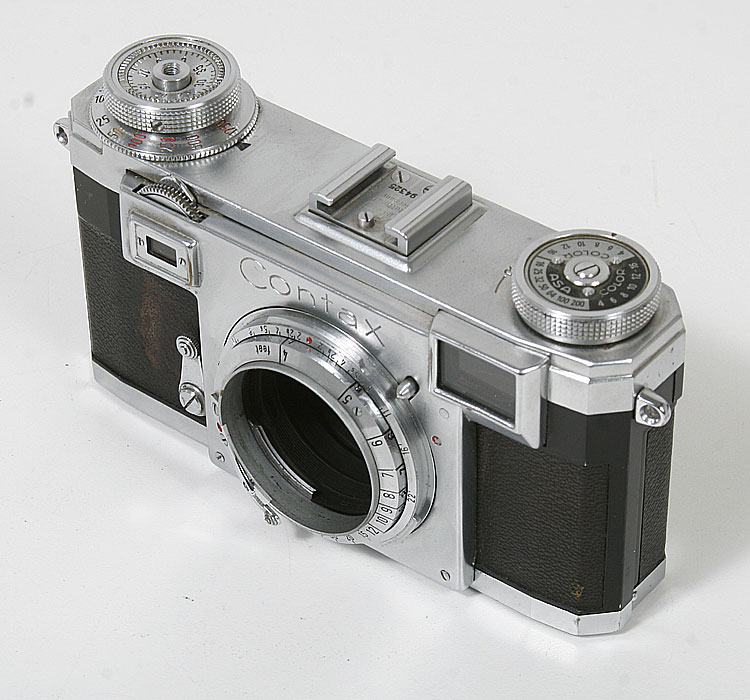
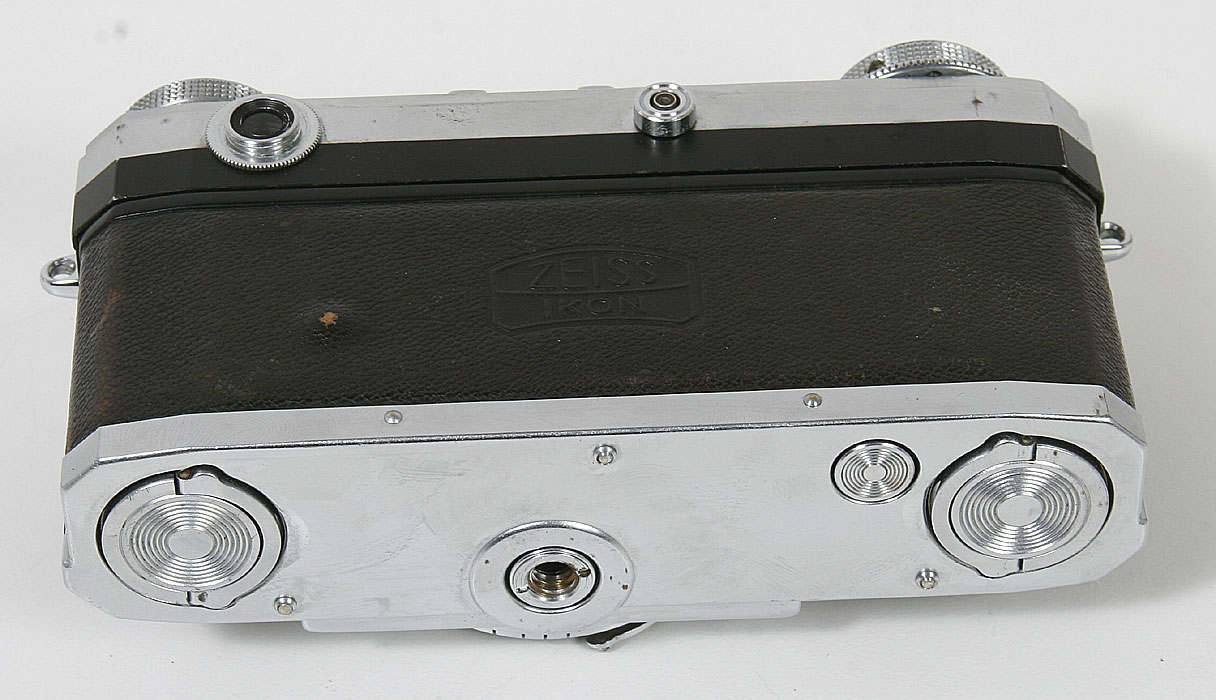

The Contax IIIA Black Dial body.
